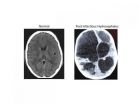(Press-News.org) For almost 30 years, researchers have sought to identify a particular enzyme that is involved in regulating electron transport during photosynthesis. A team at Ludwig-Maximilians-Universität (LMU) in Munich has now found the missing link, which turns out to be an old acquaintance.
Photosynthesis sustains life on Earth by providing energy-rich compounds and the molecular oxygen that higher organisms depend on. The process is powered by sunlight, which is captured by "biochemical solar cells" called photosystems that are found in plants, algae and certain types of bacteria. Plants have two photosystems, PSI and PSII. Each consists of a pigment-protein complex that uses solar energy to raise electrons to a higher energy level. These are then passed along a chain of electron acceptors, and the energy released is employed for synthesis of ATP, the "coinage" used for all energy transactions in cells.
Electron transport can proceed along several different routes. So-called linear electron transport requires the participation of both PSI and PSII, and delivers the electrons to a small molecule called NADP, forming NADPH. Cyclic electron flow on the other hand - which can take two alternative paths - involves only PSI, and is used solely for the production of ATP. Electrons that follow the major route are passed via an acceptor called plastoquinone to the cytochrome b6f complex and from there back to PSI, thus completing the cycle.
"The identity of the carrier that donates electrons to plastoquinone, and thus makes the process of cyclic electron flow possible, has long been a subject of controversy," says LMU biologist Professor Dario Leister, who, together with other members of his group, has now succeeded in identifying the crucial missing link in the process.
The crossroads that closes the circuit
Plants can switch between linear and cyclic modes of electron transport in order to maintain the appropriate balance between ATP and NADPH, both of which are required for synthesis of sugars from CO2. This implies that the allocation of electrons between the photosystems can be regulated. An electron transporter called ferredoxin, which receives electrons directly from PSI, acts as the junction that connects the two. "It was therefore proposed, more than 30 years ago, that a so-called ferredoxin-plastoquinone reductase (FQR) must exist, which ensures that electrons can be re-injected into the electron transport chain, and thus allows for cyclic electron transport," Leister explains, "but despite intensive searches, no such enzyme had been found."
In 2008, Leister's team identified a protein they called PGRL1, and showed that it was able to interact with PSI and with other factors known to participate in cyclic electron transport. In their latest study, they have been able to characterize the precise biochemical function of PGRL1. It turns out that the protein is the long-sought FQR that plays a central role in the regulation of cyclic electron flow. "In the long term, this finding may help us to improve photosynthetic performance by replacing or modifying specific components of the electron transport chain," Leister points out.
Pivotal regulators such as PGRL1 could possibly be tuned in a targeted fashion so as to enhance the efficiency of photosynthesis and thus increase yields in crop plants grown under controlled conditions. Furthermore, a complete understanding of the structure and regulation of the photosystems is a prerequisite for the development of methods that would allow one to optimize the process of photosynthesis for various applications – such as raising crop yields, designing new types of solar cells or generating molecular hydrogen for use as an environmentally friendly energy source.
### END
Photosynthesis: The last link in the chain
2013-01-04
ELSE PRESS RELEASES FROM THIS DATE:
Waste removal in worms reveals new mechanism to regulate calcium signaling
2013-01-04
Calcium is so much more than the mineral that makes our bones and teeth strong: It is a ubiquitous signaling molecule that provides crucial information inside of and between cells. Calcium is used to help our hearts beat regularly, our guts to function appropriately and even for fertilization to occur. It is also needed to help muscles and blood vessels contract, to secrete hormones and enzymes and to send messages throughout the nervous system.
In a study published in Current Biology, scientists from the University of Rochester Medical Center, Marquette University and ...
Why good resolutions about taking up a physical activity can be hard to keep
2013-01-04
However, Francis Chaouloff, research director at Inserm's NeuroCentre Magendie (Inserm Joint Research Unit 862, Université Bordeaux Ségalen), Sarah Dubreucq, a PhD student and François Georges, a CNRS research leader at the Interdisciplinary Institute for Neuroscience (CNRS/Université Bordeaux Ségalen) have just discovered the key role played by a protein, the CB1 cannabinoid receptor, during physical exercise. In their mouse studies, the researchers demonstrated that the location of this receptor in a part of the brain associated with motivation and reward systems controls ...
Drainage ditches can help clean up field runoff
2013-01-04
This press release is available in Spanish.
Vegetated drainage ditches can help capture pesticide and nutrient loads in field runoff, U.S. Department of Agriculture (USDA) scientists report. These ditches—as common in the country as the fields they drain—give farmers a low-cost alternative for managing agricultural pollutants and protecting natural resources.
Agricultural Research Service (ARS) ecologist Matt Moore at the agency's National Sedimentation Laboratory in Oxford, Miss., and his colleagues conducted the research. ARS is USDA's chief intramural scientific ...
A temperature below absolute zero
2013-01-04
This press release is available in German.
What is normal to most people in winter has so far been impossible in physics: a minus temperature. On the Celsius scale minus temperatures are only surprising in summer. On the absolute temperature scale, which is used by physicists and is also called the Kelvin scale, it is not possible to go below zero – at least not in the sense of getting colder than zero kelvin. According to the physical meaning of temperature, the temperature of a gas is determined by the chaotic movement of its particles – the colder the gas, the slower ...
Western neuroscience study reveals new link between basic math skills and PSAT math success
2013-01-04
New research from Western University provides brain imaging evidence that students well-versed in very basic single digit arithmetic (5+2=7 or 7-3=4) are better equipped to score higher on the Preliminary Scholastic Aptitude Test (PSAT), an examination sat by millions of students in the United States each year in preparation for college admission tests.
In findings published today in The Journal of Neuroscience research led by Daniel Ansari, Associate Professor in Western's Department of Psychology and a principal investigator at the Brain and Mind Institute, showed by ...
DARPA selects SwRI K-band space crosslink radio for flight development as part of System F6 program
2013-01-04
The U.S. Defense Advanced Research Projects Agency (DARPA) recently selected Southwest Research Institute to provide the flight low-rate crosslink wireless communications platform for the System F6 Program.
The System F6 Program, which is envisioned to culminate in an on-orbit demonstration in 2015–2016, is designed to validate a new space mission concept in which a cluster of smaller, wirelessly connected spacecraft replaces the typical single spacecraft carrying numerous instruments and payloads. This "fractionated" architecture enhances survivability, responsiveness ...
When will genomic research translate into clinical care -- and at what cost?
2013-01-04
BOSTON – Genomic research is widely expected to transform medicine, but progress has been slower than expected. While critics argue that the genomics "promise" has been broken – and that money might be better spent elsewhere -- proponents say the deliberate pace underscores the complexity of the relationship between medicine and disease and, indeed, argues for more funding.
But thus far, these competing narratives have been based mostly on anecdotes. Ramy Arnaout, MD, DPhil, a founding member of the Genomic Medicine Initiative at Beth Israel Deaconess Medical Center (BIDMC), ...
Rainfall, brain infection linked in sub-Saharan Africa
2013-01-04
UNIVERSITY PARK, Pa. -- The amount of rainfall affects the number of infant infections leading to hydrocephalus in Uganda, according to a team of researchers who are the first to demonstrate that these brain infections are linked to climate.
Hydrocephalus -- literally "water on the brain" -- is characterized by the build-up of the fluid that is normally within and surrounding the brain, leading to brain swelling. The swelling will cause brain damage or death if not treated. Even if treated, there is only a one-third chance of a child maintaining a normal life after post-infectious ...
Researchers seek longer battery life for electric locomotive
2013-01-04
UNIVERSITY PARK, Pa. -- Norfolk Southern Railway No. 999 is the first all-electric, battery-powered locomotive in the United States. But when one of the thousand lead-acid batteries that power it dies, the locomotive shuts down. To combat this problem, a team of Penn State researchers is developing more cost-effective ways to prolong battery life.
The experimental locomotive's batteries, just like automotive batteries, are rechargeable until they eventually die. A leading cause of damage and death in lead-acid batteries is sulfation, a degradation of the battery caused ...
Outsourced radiologists perform better reading for fewer hospitals
2013-01-04
UNIVERSITY PARK, Pa. -- Experience working for a particular hospital matters when it comes to the performance of radiologists who work for outsourcing teleradiology companies, according to a team of researchers, whose finding could have important implications, given the growing use of telemedicine.
"More than half of all hospitals now use teleradiology services," said Jonathan Clark, assistant professor of health policy and administration, Penn State. "Hospitals send their X-rays, CT scans, MRIs and other images to outsourcing companies who then forward the images to ...


